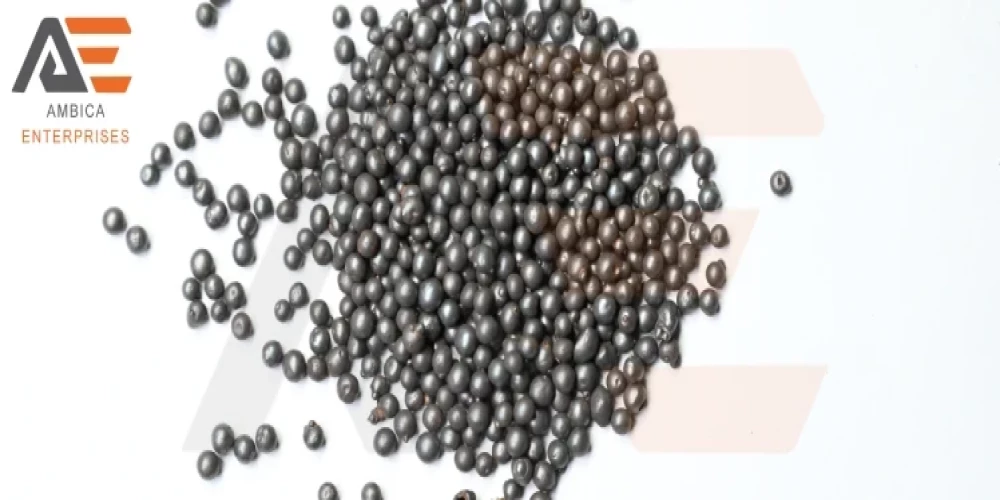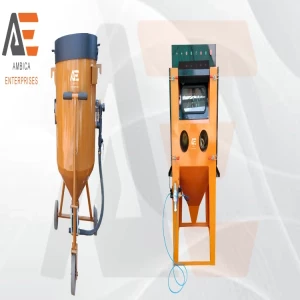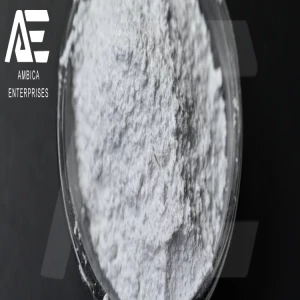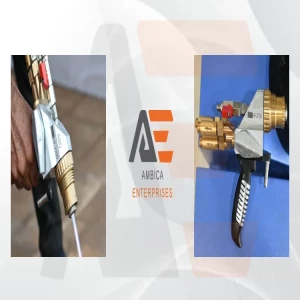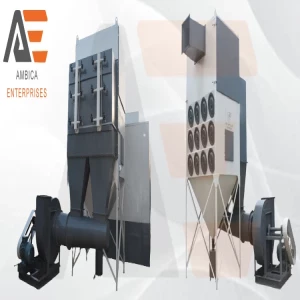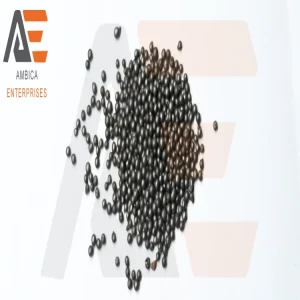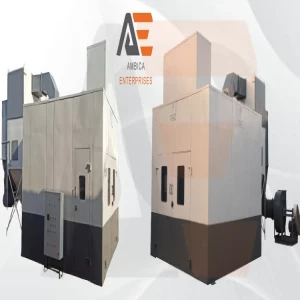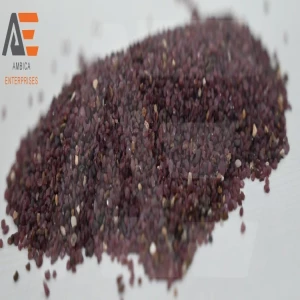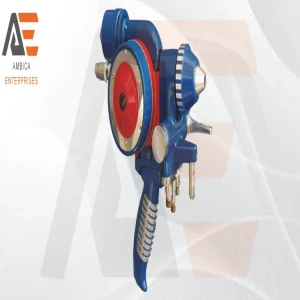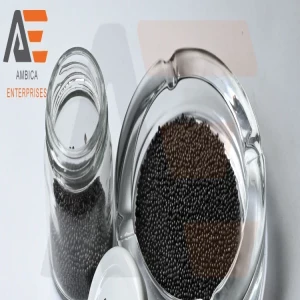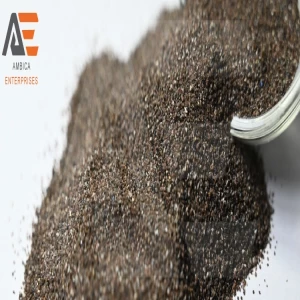High Carbon Steel Shots are metallic-type abrasive media that are highly efficient in preparing, cleaning, and finishing surfaces during industrial processes. With a carbon content ranging from 0.85% to 1.20%, primarily comprised of iron, it is the hardest and densest. This makes it perfect for blasting. The production begins by melting steel scrap and then atomizing it into round particles after that heat treatment is done on them so that they can attain the necessary hardness. With a diameter size of between 0.3mm and 2.5mm, the high carbon steel shot abrasive can be used for various blasting operations. Some of the major applications include descaling, de-rusting, deburring as well as shot peening by a shot blasting machine.
One major advantage of high carbon steel shot is its recyclability. Unlike other types of abrasives which tend to wear out quickly during use, high carbon steel shots can be reused severally thereby providing an economical solution for industrial purposes. This type of abrasive has high density coupled with hardness making it efficient in cleaning and finishing thus saving time and labor spent on surface preparation activities. The industries where these kinds of abrasives such as steel shot and steel grit are widely used include automotive, aerospace, and construction among others related to metal fabrication.
How is High Carbon Steel Shot Abrasive Manufactured?
The manufacturing process of high-carbon steel shot abrasive is intricate and involves several critical steps to ensure the production of high-quality, durable abrasives suitable for industrial applications.
- Raw Material Selection: Steel scrap is chosen as the primary raw material due to its availability and suitability for producing high-quality steel shots and low carbon steel shots abrasive production.
- Melting: The steel scrap is melted in the furnace, creating molten steel that atomizes well; it must reach the required temperature for the atomization process.
- Atomization: Molten steels are atomized by passing through nozzles at high pressure to break them into small droplets which solidify into spherical particles when they cool. This step determines the size and shape of the shot.
- Heat Treatment: Heat treatment is heating the steel shot to high temperatures and then rapidly cooling it down. This is done to achieve the desired hardness and microstructure. The specific temperatures and rates at which it is cooled are controlled so that all particles have uniform hardness and toughness.
- Screening: To meet different application requirements, particles are screened by size. They are then passed through different sieves which classify them into grades according to their sizes such as steel shot s70 to steel shot s980.
- Quality Control: Hardness, size distribution, and chemical composition are some of the qualities tested on samples taken from the steel shots. This ensures that they conform to the standards set by industries. Any particles that fail to meet these specifications are thrown away or recycled.
- Packaging: After the steel shot has aged, it should be put in bulk bags or drums for delivery. It is crucial to pack them properly, lest they become infected with moisture or dirt, thus affecting their capability.
What are the different sizes of high carbon steel shots?
The high carbon steel shot abrasive is available in various sizes depending on specific applications and desired surface finishes. The blasting process’ efficiency, as well as the outcome, depend greatly upon the dimensions of these abrasive particles.
Very fine particles to larger ones characterize high carbon steel shot by its diameter. Here are some standard sizes widely used in the industry:
|
Size (mm) |
Application |
|
0.3 |
Fine cleaning, delicate surfaces |
|
0.6 |
General cleaning, moderate surface texture |
|
1.0 |
Heavy cleaning, rust, and scale removal |
|
1.5 |
Aggressive cleaning, surface profiling |
|
2.0 |
Shot peening, heavy-duty applications |
|
2.5 |
Deep cleaning, thick coating removal |
What are the Applications of High Carbon Steel Shot Abrasive?
Due to its exceptional properties, high carbon steel shot abrasive is extensively used in numerous industrial settings. Here are some example applications:
- Descaling: This process removes scale, rust, and other impurities from metal surfaces by using an airless shot blasting machine. Hardness and density make high carbon steel shot ideal for this purpose. It is commonly used in surface preparation in steel mills, foundries, and metal fabrication shops.
- Shot Peening: By striking metal surfaces with high carbon steel shot, compressive stresses are induced thereby improving fatigue resistance. This method is widely applied in automotive, aerospace, and manufacturing industries for components such as gears, springs, turbine blades, etc.
- Surfaces Cleaning: Dirt, oil, paint or any other unwanted coatings can be removed using a pressure blasting cabinet and automated systems where high carbon steel shot is used as the cleaning agent. This application is common in automotive and industrial maintenance.
- Deburring: Removes sharp edges and burrs from machined or cut metal parts using a high carbon steel shot. Essential in automotive, aerospace, and metalworking industries for achieving precise and smooth finishes.
- Surface Preparation: Prepares metal surfaces for coating or painting by creating a clean and roughened surface with a high carbon steel shot. Critical in construction, shipbuilding, and manufacturing for coating adhesion.
- Sand Blasting: A portable sand blasting machine cleans and prepares surfaces by propelling high carbon steel shot at high speeds to remove rust, paint, and contaminants. Ideal for effective cleaning and surface preparation.
- Metal Finishing: Improves surface quality and appearance of metal parts using high carbon steel shot for a smooth and polished finish. Common in jewelry, electronics, and automotive industries for high-quality finishes.
- Casting Cleaning: Cleans residual sand, scale, and contaminants from cast metal parts using a high carbon steel shot. Prevalent in foundries and metal casting facilities.
- Pipe Cleaning: Removes rust, scale, and contaminants from inner and outer pipe surfaces using high carbon steel shot. Critical in oil and gas, water treatment, and construction industries.
- Weld Cleaning: Cleans slag, spatter, and contaminants from welded joints with high carbon steel shot, enhancing the weld's appearance and integrity. Essential in construction, shipbuilding, and manufacturing.
What are the Benefits of Using High Carbon Steel Shot Abrasive?
High carbon steel shot abrasive offers numerous benefits that make it a preferred choice for many industrial applications. These benefits stem from its unique properties and the efficiencies it brings to surface preparation and finishing processes.
- High Durability: High carbon steel shot is exceptionally durable, resisting breakdown during blasting due to its hardness and toughness. Its longevity offers a cost-effective solution over time.
- Effective Cleaning: With high density and hardness, high carbon steel shot abrasive efficiently removes rust, scale, and contaminants, enhancing productivity.
- Improved Surface Quality: Producing a uniform, clean surface with high carbon steel shot abrasive ensures better adhesion of coatings and enhances product appearance.
- Reusability: Multiple uses minimize waste and reduce overall abrasive costs, contributing to environmental sustainability.
- Consistent Performance: Uniform size and hardness ensure predictable blasting results, maintaining quality standards.
- Enhanced Fatigue Resistance: In shot peening, it extends the service life of metal parts, reducing fatigue failures.
- Versatility: Used in descaling, shot peening, deburring, and surface preparation, it offers valuable versatility across industries.
- Cost-Effectiveness: Its durability and reusability lower abrasive replacement needs and maintenance costs.
- Environmentally Friendly: Recyclability and reduced waste generation in a shot blasting cabinet make it environmentally friendly.
- Safety: Safer than materials like silica sand, it improves overall safety in blasting operations.
How Does High Carbon Steel Shot Abrasive Compare to Other Abrasives?
High carbon steel shot abrasive stands out among various abrasive materials due to its unique properties and advantages. Here is a comparison of high carbon steel shot abrasive with other commonly used abrasives:
- High Carbon Steel Shot vs. Low Carbon Steel Shot: A high carbon steel shot is harder and more durable, offering more reuses. Its higher hardness and density provide effective cleaning and peening, making it cost-effective despite the initial higher cost.
- High Carbon Steel Shot vs. Cast Steel Grit: A high carbon steel shot is spherical for a smoother finish, while angular cast steel grit is better for aggressive cleaning. Both are durable, but a high carbon steel shot may offer better reusability.
- High Carbon Steel Shot vs. Garnet: Garnet is natural but less durable, while high carbon steel shot lasts longer. Despite potential initial cost savings with garnet, high carbon steel shot’s reusability often makes it more cost-effective.
- High Carbon Steel Shot vs. Aluminum Oxide: Aluminum oxide is harder, and ideal for tough materials, while high carbon steel shot balances hardness and reusability, making it cost-efficient for shot peening.
- High Carbon Steel Shot vs. Silicon Carbide: Silicon carbide is very hard, and used for tough tasks, while high carbon steel shot offers reusability and economy for cleaning and peening.
- High Carbon Steel Shot vs. Glass Beads: Glass beads are lighter and less durable, while high carbon steel shot provides more durability and efficiency for aggressive tasks.
- High Carbon Steel Shot vs. Sand: A high carbon steel shot is safer, more durable, and reusable compared to sand, making it more effective with less material needed.
- High Carbon Steel Shot vs. Plastic Media: Plastic media is softer for delicate tasks, while high carbon steel shot offers durability and efficiency, making it more cost-effective over time.

